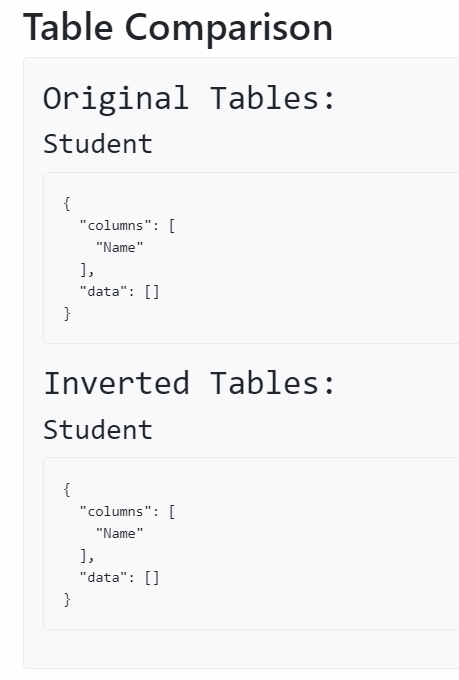08-10-2024 Nuove proprietà di entità esistenti
La Novitade
Meta
- Software per controllare che i risultati dei merge delle br siano ok
HERITRACE
Logica per creare nuovi predicati di entità esistenti (identica a quella per entità nuove)
- Validazione backend identica a quella per la modifica
- Validazione frontend indentica a quella per la creazione
Modificare l’ordine cancella tutto le entità e le ricrea nell’ordine corretto. Anche aggiungere un nuovo elemento alla lista degli elementi ordinati ha lo stesso effetto.
è anche possibile aggiungere e riordinare contemporaneamente. Logica lato server identica, usiamo un id temporaneo che viene mappato a quello mintato
Problema con l’inversione. Le entità collegate cancellate (gli ar) non vengono ricreati, viene ricreato soltanto il collegamento tra la br e le ar
RML
Se il DataFrame è vuoto, crea solo la tabella senza inserire dati: null ≠ []

La query di inversione ricava informazioni sul datatype
Gli oggetti per riferimenti perdevano l’informazione sul datatype, perchè accadeva questo
1
2
3
4
5
6
7
8# Before
lines.append(f"OPTIONAL{{?{subject_reference} {predicate} ?{plain_object_reference}.")
lines.append(f"OPTIONAL{{BIND(ENCODE_FOR_URI(STR(?{plain_object_reference})) as ?{object_reference}_encoded)}}")
lines.append(f"FILTER(!BOUND(?{object_reference}_encoded) || !BOUND(?{plain_object_reference}) || ENCODE_FOR_URI(STR(?{plain_object_reference})) = ?{object_reference}_encoded)")
# After
lines.append(f"OPTIONAL{{?{subject_reference} {predicate} ?{plain_object_reference}. \
BIND(DATATYPE(?{plain_object_reference}) AS ?{object_reference}_datatype)}}")
Gestione blank node in subject template
Gestire i blank node generati tramite template potrebbe non avere senso, in quanto i blank sono per definizione nodi anonimi, e recuperare all’indietro un valore da un qualcosa di anonimo non ha senso. Oltre al fatto che rdflib di default anonimizza i blank node, non preserva i loro nomi originali. Ho dovuto creare un parser custom per preservare il nome originale. In ogni caso, si perde l’informazione sul datatype.
We need to extract the variables used in its template (e.g.,
IDin"students{ID}") to retrieve the necessary data- We bind the blank node subject to a variable (e.g.,
?1), but since we cannot use its value directly, we use it as a starting point to extract the variables - Extract variables from the template
- We parse the template and generate SPARQL query parts that extract the variables used in the template.
- We handle each variable in the template by splitting the template into parts before and after the variable, and using
STRAFTERandSTRBEFOREfunctions to extract the variable’s value from the blank node identifier.
- We bind the blank node subject to a variable (e.g.,
Esempio
1
_:students10 [http://xmlns.com/foaf/0.1/name](http://xmlns.com/foaf/0.1/name) "Venus" .1
2
3
4SELECT ?Name ?ID_encoded ?ID_datatype WHERE {
?subject <[http://xmlns.com/foaf/0.1/name](http://xmlns.com/foaf/0.1/name)> ?Name .
BIND(STRAFTER(STR(?subject), 'students') as ?ID_encoded)
}
Gestione inversioni che non ritornano risultato per eccezioni
Domande
- Perchè Tijs si è preoccupato di fare ENCODE_FOR_URI per gli oggetti?
- è permesso dare un sbirciatina ai dati di partenza?
- I still don’t known what to do with views